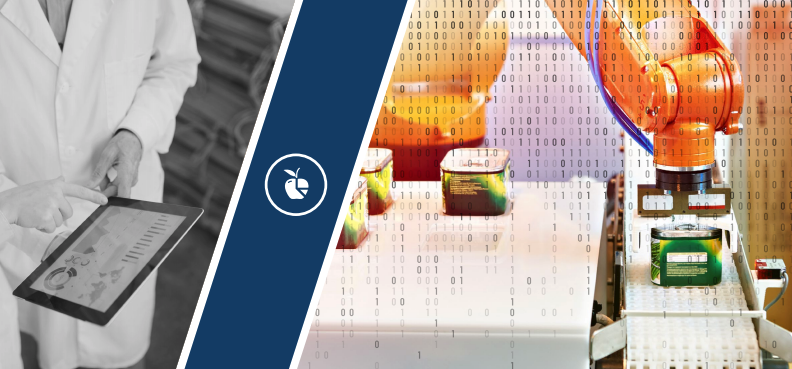Big data comprises the large volume of data that businesses collect on a day-to-day basis. The question is: Are you taking advantage of it?
Data and analytics tools can be customized to meet your facility’s unique needs and goals — whether you simply want to gain insights to resolve certain pain points or install system-wide automation technology that takes your efficiency to the next level.
Let’s take a look at three applications for big data in a food processing facility:
1. Minimize raw ingredient waste
One of the biggest wasted costs at food plants is unused raw ingredients. Shifting from a “made to stock” to “made to order” mindset can increase your plant’s efficiency and decrease waste.
Analytics and automation are critical to adopting the made-to-order strategy, also known as just-in-time (JIT) manufacturing.
You can use predictive analytics to anticipate what consumer demand will be like throughout the year, so that you’re only manufacturing what will sell. Your plant can also minimize waste and the need for extra storage by sharing analytics with key suppliers. This supplier collaboration is accomplished by installing sensors that detect the level of raw ingredients in storage or a silo. The real-time data is then provided to suppliers, who are able to ship ingredients only as needed rather than a standard bulk amount.
Analytics allow you to measure another important metric: material usage variance, which can be expressed as a cost or as a percentage of raw material wasted. By adding level sensors and load cells throughout your entire manufacturing process, you can understand exactly where waste is happening and resolve issues costing your plant money.
2. Improve workforce productivity
Automation powered by big data not only eliminates human error for more routine tasks, but also frees up employees to work on more complex issues. While your team is focused on top-level thinking and strategy, the automated system monitors packaging needs and can notify suppliers accordingly. For example, it will alert a supplier if more or less bottles are needed as processing ebbs and flows. Supplies arrive just in time rather than being stored for months, allowing facilities to be leaner.
3. Enhance communication for better product flow
While it may seem like people would be better at communicating with each other than technology is, plant owners often find that automated systems make it easier for their teams to coordinate — improving overall product flow.
A common issue for many plants is miscommunication between processing and packaging personnel. For instance, the packaging team may have changed over while the processing team is still producing the same product. This type of miscommunication may be occasional, but it is costly. With analytic tools, however, the processing staff knows exactly when packaging is conducting a changeover, so they can switch products to match.
Sometimes food plants may realize they need more product because of a surge in demand. Instead of last-minute changeovers, they can anticipate potential shortages and schedule resources earlier. Both plant owners and employees are empowered with the increased visibility provided by real-time data.
Want to discover 6 more applications of big data tools for food plants? Download our e-book, “Big Data and Food Processing: A Guide to Leveraging Analytics at Your Facility” to unlock more!




